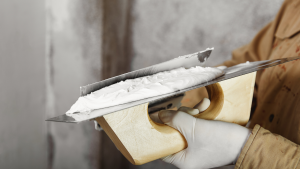The word “primer,” which derives from the Latin word primus, which literally translates to “first,” refers to the “first” coat or the “prime” coat, and it gets you ready for the subsequent coats. Without giving it any thought, a lot of people employ primers in a variety of different elements of their day-to-day lives. For instance, a math primer can be the first piece of material that a student encounters that exposes them to the world of numbers, counting, addition, subtraction, and other concepts and equations. This lays the groundwork for the more sophisticated ideas that will be covered in subsequent lessons.
A significant number of women always begin their makeup regimen by applying a primer or foundation to their face, followed by eye makeup, lipstick, mascara, and nail polish. These primers, which create a barrier between the product and the skin, enable the application of makeup easier and help it to remain in place for a longer period of time. Priming paint functions in the same way as regular paint.
The initial layer of coating that is applied to surfaces made of wood, plastic, concrete, metal, and other materials ensures that the paint will cling to the surface in the correct manner. A layer of paint primer applied to the surface to be painted increases its longevity, enhances its beauty, and provides an additional layer of protection. Primers enable you to properly prepare the surface, which is important whether you’re trying to give yourself a flawless new look or create a beautiful environment in your home.
Primers are Categorized according to Type
Due to the fact that wood, concrete, and other materials each have their own unique physical and chemical composition, you will need to use a primer that reacts with the chemistry of the surface you are working on. Each of the three primary categories of primers, oil, latex, and shellac, has its own unique set of qualities and applications, including the following examples:
Primers that are oil-based
This pore-filling paint primer produces a smooth finish by completely filling the pores on the surface. Primers made of oil, which take a long time to dry and need to be thinned and cleaned with mineral spirits, are a good choice for the following types of painting projects:
- Raw wood not yet finished
- Eroded wood
- Polished and stained wood
- Forests with a bloody history
- existing paint surface that is cracked, damaged and has other flaws
Latex primer
Latex primers are made up of water-soluble ingredients that dry in a very short amount of time and are gaining in favor. This primer allows water vapor to pass through it and gives a finish that is resistant to cracking while at the same time allowing water vapor to pass through it. The use of latex primers is appropriate in the following contexts:
- Unfinished wallboard or drywall
- Bricks and blocks made of concrete
- Raw and pliable woods
- Galvanized metal (properly cleaned)
Shellac primers
These primers have a foul stench because they contain denatured alcohol, which is known to destroy microorganisms that are responsible for producing specific scents. Primers made of shellac should be utilized for the following projects:
- Smoke, knots, stains, and blood can all be concealed with this.
- When it is necessary to die swiftly, use this.
When looking for a paint primer, you need to be aware of the distinctions between adhesion-promoting primers and porosity-sealing primers. These differences are important to keep in mind. The adhesion-promoting primer, also known as a tie coat, “ties” the fresh paint to the current surface. In most cases, the tie coat adheres to the material surface better than the topcoat does. It is necessary to use a porosity-sealing primer on porous surfaces such as wood and concrete. This type of primer ensures that the coating will adhere reliably and prevents bubbles, blisters, and pinholes from developing in the top coat.
A Guide to Covering Complicated Colors
The endeavor of painting dark walls in colors such as black, brown, or crimson can appear to be rather challenging. Because you need to fill the pores in the surface of the material in order to prevent bleeding, dark-colored walls often require two coats of a high-quality primer-sealer. If you find that you have walls that are fluorescent orange, neon green, or any other bright hue, you should follow the same course of action that is recommended for dark-colored walls, which is to apply two coats of primer.
In order to prevent bleeding, a lot of experienced painters tint the primer with several levels of gray, or they use a hue that is near to the shade of the topcoat. If you want the greatest results from using paint primers, it is best to either follow the instructions on the label of the paint can or seek the counsel of a professional.
If you are in need of assistance with the priming and painting of your home or commercial property, please click here to choose a time and day that is convenient for your free estimate.







